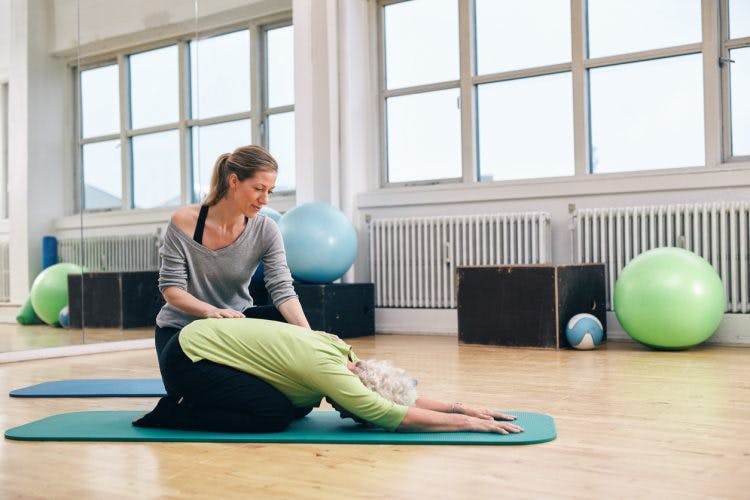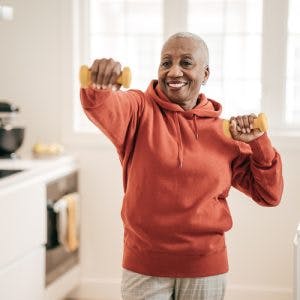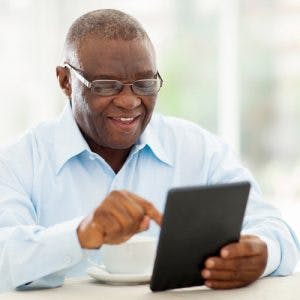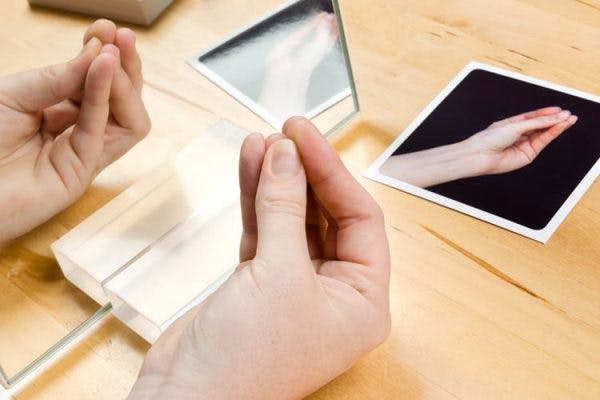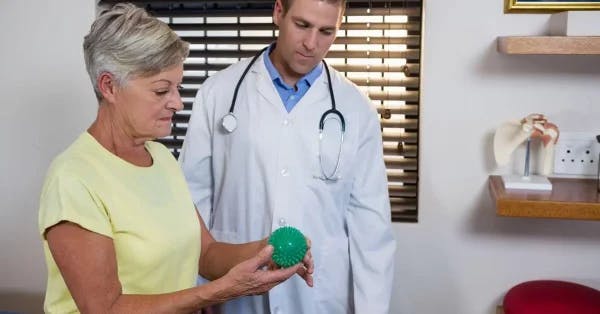The benefits of yoga for stroke patients are multifaceted, especially when it comes to improving movement and independence. Yoga can improve cognition, flexibility, and breathing and is accessible despite significant movement impairments. In addition, you’ll learn how one yoga teacher used this practice to speed up her recovery from a stroke.
We hope this article inspires you to safely start your own yoga practice to aid your recovery.
Yoga Is About More than Cool-Looking Poses
First, let’s clarify who can do yoga. (Hint: it’s not just for bendy people.)
You don’t have to be flexible or need perfect posture or balance to do yoga. It’s about much more than cool-looking poses. Poses are only a small part of yoga.
Yoga involves a combination of poses, meditation, breathing, and observation techniques. It’s about fostering your mind-body connection, one of the key benefits of yoga for stroke patients.
The mind-body connection is at the core of stroke rehabilitation. Physical and occupational therapy aim to rewire the brain (through neuroplasticity) to improve movement in the body for increased functional abilities. Yoga is stimulating to our brains as it improves communication between the brain and body (i.e., your “mind-body connection”).
Best of all, yoga can be adapted to meet your ability level. For example, here’s a video that demonstrates a classic yoga pose adapted for stroke patients:
The simplicity of the yoga practice allows stroke patients to reap many different benefits.
Benefits of Yoga for Stroke Patients
Below, we share a success story for yoga and stroke recovery. But first, we would like you to understand why yoga is so helpful.
Here are some major benefits of yoga for stroke patients:
1. Improves Mind-Body Connection
Yoga is therapeutic for stroke recovery because of the intense focus and attention required. Each movement is slow and deliberate.
Even if you can’t accomplish the movement perfectly, the concentration required helps stimulate brain activity. More movement, especially if it is repetitive, helps the rewiring process of neuroplasticity.
2. Improves Balance, Range of Motion, and Strength
In a study from 2014, 37 stroke survivors participated in yoga twice a week for 8 weeks. By the end, patients experienced improved pain reduction, neck range of motion, passive hip range of motion, upper extremity strength, and endurance.
During the study, patients were guided through a yoga practice that included postures, breathing, meditation, and relaxation while sitting, standing, or on the floor.
This demonstrates that you don’t need to be flexible or make fancy postures to benefit from yoga for stroke patients. Even simple elements, like meditation, can have a profound effect.
Read about meditation for stroke patients »
3. Improves Walking and Balance
Stroke survivors who suffer from mobility issues may experience poor balance and gait (manner of walking).
Fortunately, in the same 2014 study on yoga for stroke recovery, researchers discovered that yoga helped stroke survivors improve both balance and gait speed.
The quality of their gait improved, demonstrated by longer steps and better coordination. Best of all, the study didn’t even intend to discover a correlation between yoga and gait improvement!
Researcher Tracy Dierks reported, “The yoga intervention was designed to improve balance, not gait; we did not focus on improving gait at all. Yet we saw major improvements in most clinical gait measurements.”
Researchers found benefits outside of their original purpose. This speaks volumes about the power of yoga for stroke patients.
Want 25 pages of stroke recovery exercises in a PDF? Click here to download our free Stroke Rehab Exercise ebook now (link opens a pop up for uninterrupted reading)
4. Accessible for All Stroke Patients
Yoga is also helpful for stroke patients because it can be tailored to almost any stage of recovery.
Even if you have post-stroke paralysis, you can start with meditation and mental practice. These practices do not require any movement – you can do them from bed.
As you work on recovery from post-stroke paralysis, perhaps you regain some mobility.
From there, you can try chair yoga or use props (like foam blocks) to support your poses.
Here’s a chair yoga flow demonstrated by a stroke survivor who credits yoga to her amazing recovery.
Additionally, even if your stroke affected you more cognitively than physically, yoga can stimulate your cognition. Practicing yoga requires sustained attention, sequencing skills, and potentially even problem-solving abilities, all of which could be affected by a stroke. Consistently participating in activities, like yoga, that require higher-level cognitive skills facilitates your brain’s neuroplasticity.
For survivors of an occipital lobe stroke, who may have developed visual impairments, practicing yoga can provide an opportunity to encourage individuals to utilize newly learned compensatory techniques. For example, the visual demands of yoga, from watching the instructor move throughout the room to examining one’s own positioning, would allow those with a visual field deficit to practice scanning techniques throughout the session.
Yoga is great for helping with many aspects of stroke recovery.
5. Reminds You to Breathe While You Exercise
Breathing is important during all forms of exercise – especially rehabilitation exercise.
However, when stroke patients struggle with movement, their body may not be expanding to breathe deeply and experience the benefits of deep diaphragmatic breathing. This limits the amount of oxygen available to the body and brain, which isn’t good – especially during rehabilitation.
Fortunately, yoga places a heavy emphasis on linking breath to movement. Breathe in, move one way. Breathe out, move another way.
This emphasis on your breath will help prompt you to breathe deeply when you’re doing yoga for stroke recovery. This will translate to when you’re going about your daily life.
As you can see, there are many benefits of yoga for stroke patients. Next, we’ll share a success story to help inspire you to get started.
How a Stroke Survivor and Yoga Teacher Boosted Her Recovery
A 51-year-old yoga teacher named Isabelle suffered a stroke, and her recovery was remarkably fast. It took her 3 months to reach a robust recovery, and she gives the credit to her experience with yoga.
Specifically, she noted that her breath/movement connection and mental practice (Mental practice is a top rehabilitation technique for overcoming post-stroke paralysis) seemed most powerful in her recovery.
Isabelle’s mental practice involved visualizing herself doing various yoga poses.
Each day, she’d lie in bed and visualize those yoga poses, and then she would try to practice them physically as well. And every day, Isabelle noticed that she could do the pose a little better.
(This example came from a chapter of Healing & Happiness After Stroke.)
Mental practice and yoga are both great for stroke recovery because they help rewire the brain.
This doesn’t mean that everyone will recover quickly after stroke through yoga. Isabelle likely sustained a mild or moderate stroke, resulting in secondary effects that were faster to remedy than others.
Yoga is just one of many rehabilitation methods that you can use to boost recovery from stroke.
Start Your Yoga Practice for Stroke Recovery
There are many benefits of yoga for stroke recovery. We recommend that you look into starting your yoga practice as soon as possible.
Hop online and see if there are any yoga therapists in your area. Then give them a call to see if they have experience with stroke survivors.
Be safe and have fun!

